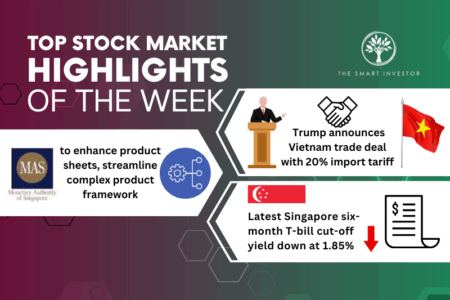Singapore Exchange Limited (SGX: S68) or SGX has paid a dividend since its fiscal year 2001.
I have owned its stock since 2018.
SGX is in my personal portfolio for one key reason: its dividends.
The stock exchange operator does have a long dividend track record.
However, that alone does not mean that it will continue paying out a dividend as it has since 2001.
Today, I would like to do a simple three-step dividend health check-up to see whether I can count on SGX to continue paying me in the coming years.
Financial check #1: Operating revenue and net profits
Revenue is the lifeblood of any company.
Everything starts with the dollars coming through the doors of the company. SGX recorded solid sales growth between fiscal 2010 and fiscal 2021, as seen in the graph below.
Source: TIKR
Most of the top-line growth has flowed down to the bottom line.
Revenue and net profit have grown by around 4.7% and 3.8% per year, respectively, for the period shown above.
For its latest earnings report for the fiscal year ending 30 June 2021 (FY2021), revenue growth was flat but net profit fell by 6% year on year.
Financial check #2: Free Cash Flow
As the saying goes: revenue is vanity, profit is sanity, and cash is reality.
Dividend payouts are at their most reliable when they are paid from cold, hard cash generated by the business.
Source: TIKR
For the most part, cash flow that is flowing into SGX has exceeded the dollars needed to fund its dividend.
The exceptions are fiscal year 2014 and 2019 where free cash flow fell short.
I am not worried, though.
For fiscal 2021, SGX generated almost S$508 million in free cash flow and paid out S$342 million in dividends.
So, its dividend continues to be well-funded.
Financial check #3: Cash in the bank
The final pit-stop is an inspection of the cash on SGX’s balance sheet.
Source: TIKR
SGX maintains a rock-solid balance sheet with an average cash position of S$810 million between fiscal 2010 and fiscal 2021.
As of 30 June 2021, SGX’s cash position rose to S$1.1 billion with S$467 million in borrowings.
Get Smart: Business before financials
There are two major stock market trends happening around the world.
Start-up companies are remaining private longer compared to the past.
Case to point: When Amazon.com (NASDAQ: AMZN) went public in 1997, the online retailer was valued at around US$440 million.
In 2004, Google IPO-ed with a market cap of US$23 billion. And by the time Facebook (NASDAQ: FB) debuted in the stock market, the company had a price tag of over US$100 billion.
At the same time, the pool of companies listed, including in the US, is shrinking globally.
SGX is no exception.
It’s getting harder to attract companies to get listed.
Against this backdrop, CEO Loh Boon Chye has repositioned SGX as an international multi-asset exchange.
SGX has found some success in areas such as China index derivatives, iron ore trading and REITs.
For me, SGX’s move appears to mirror that of the wealth management industry, which is constantly demanding a wider range of financial products.
The world is also rapidly digitalising.
The playing ground may expand — but the competition that is coming could be global or regional.
Remaining relevant is key, and that is what I would like to see SGX do.
Looking for more dividend stock ideas? Then you’ll want to know about these 5 strong SGX companies. We’ve prepared everything you need to know in a FREE special report: “Dividend Stocks That Can Pay You For Life”. Click here to download now.
Follow us on Facebook and Telegram for the latest investing news and analyses!
Disclosure: Chin Hui Leong owns shares of Singapore Exchange.




